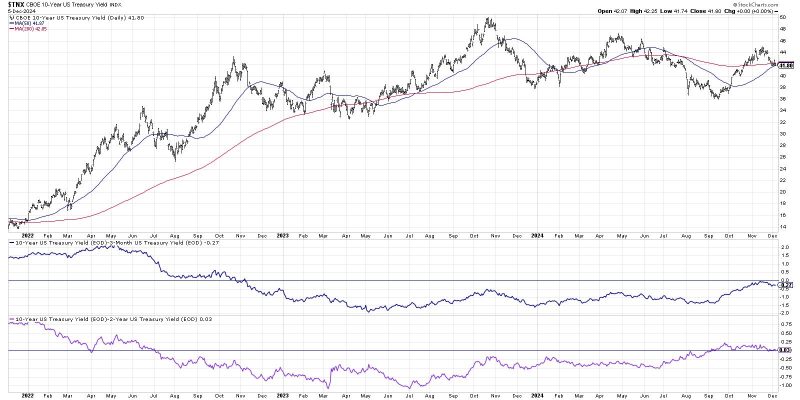Understanding the Factors Influencing the Normal Yield Curve
Before diving into the specific Exchange Traded Funds (ETFs) that could grow under a normal yield curve, it is critical to understand what a normal yield curve is. A yield curve offers a graphical representation of interest rates on debt for a range of maturities. It shows the yield an investor can anticipate for an investment in bonds holding maturity at a constant level. A normal yield curve, which is also termed as an upward sloping yield curve, reflects a financial environment where the longer the maturity, the higher the yield. This expected increase in return is mainly due to the risks associated with committing to long-term investments. The expectation is that over time, inflation will decrease the future value of money, which, in turn, impacts the price changes of long-term versus short-term bonds.
Implication of a Normal Yield Curve in the Market
A normal yield curve suggests optimistic economic prospects. It indicates an expectation of a strong economy where there will be a rise in inflation and a positive return on larger investments, owing to the risk-reward tradeoff. It is in such a business environment that some ETFs are poised to outperform their respective markets.
Two ETFs Set to Shine on a Normal Yield Curve
1. Financial Select Sector SPDR Fund (XLF)
The banking sectors often perform well in the event of a steepening yield curve, because this situation broadens their net interest margin. The Financial Select Sector SPDR Fund (XLF) is a large ETF that predominantly invests in financial services companies, such as banks, which stand to benefit from a normal yield curve. Since banks borrow short term and lend long term, they profit from the higher interest rates paid on long-term loans versus their short-term borrowings when the yield curve is upward sloping.
XLF’s portfolio consists of major banks known for their reputed performance and solid foundations like Bank of America and JPMorgan Chase. Thus, they depend on wider interest rate spreads to generate income. Hence, this fund stands to gain when there’s a normal yield curve.
2. iShares 20+ Year Treasury Bond ETF (TLT)
The iShares 20+ Year Treasury Bond ETF (TLT) is another fund that could thrive under a normal yield curve. This ETF examines the ICE U.S. Treasury 20+ Year Bond Index and counterbalances its orientation to replicate the index’s performance. When the yield curve is normal, long-term bonds tend to have higher yields than short-term bonds. Since TLT caters to bonds with maturities longer than 20 years, the fund can reap the benefits of these high yields.
In conclusion, an understanding of the yield curve and its implications are essential for stock market investors. Holding ETFs like XLF and TLT in their portfolio could be worth considering for investors during periods of a normal yield curve. However, it is crucial to remember that although there are several opportunities in the market when the yield curve is normal, any investment decision should involve careful analysis and evaluation of the investor’s personal goals, risk tolerance, and financial condition.




